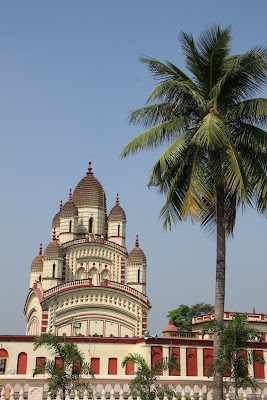
Lago Argentina

Another view of the stunning Lago

Flamingos
El Calafate is the primary hub for tourists coming to experience Argentina’s glaciers, the two largest being Perito Moreno and Upsala. Our first afternoon in the Colorado ski resort- like town, we decided to visit a traditional estancia or ranch for a horseback ride to view the Lago Argentina and Chile’s Torre del Paine national forest before enjoying a typical meal of barbequed meats and grilled vegetables. The air was incredibly crisp and clean, and the views, absolutely breathtaking. Patagonia is especially known for its trout and lamb, and both are prepared and served in a variety of ways from grilled or smoked to minced for some of the most delicious pastas and empanadas. Suffice it to say that I couldn’t fit into the same clothes on departure from Argentina that I had entered the country in.



A View of Torres del Paine
The following morning, we started the one hour bus ride to the Los Glaciares National Park in the Santa Cruz province. The terrain transformed from very flat drylands surrounding those lavender mountains and the vivid green waters of the Lago Argentina to ice-capped mountains nestled deep inside the forested park. Once we reached the head of the Lago, we boarded a small boat, and within twenty minutes of departing, were able to catch initial glimpses of the spectacular Perito Moreno glacier, one of the Southern Patagonian Ice Field’s 48 glaciers located in the Andes. I’d never seen anything like it before. As we approached the mammoth wall of ice that was the head of the glacier, the white protrusions of ice sharpened to reveal the stunning prism blue hues, either capping or breaking through the glacier’s face. A glacier is essentially a river bed of ice and is continuously moving forward in the way river water reacts to a current. As the glacier moves forward, the sounds it bellows are thunderous as the pressure rips through the structure, causing chunks at the head to break off, resulting in icebergs. It’s a dynamic, living creature in many ways.

Heading south on the Lago to Perito Moreno glacier

A varied landscape across Patagonia, even in the summer

Perito Moreno glacier

Stunning curves of the glacier

Front of the glacier

Pristine

Another view of the front of the glacier

And, again...too stunning

Rough terrain of the glacier

Stunning terrain around the glacier
Once we reached the dock, we hiked across the reddish pink rock formations and through the pine forest to the base of the glacier. From here, I opted to step into crampons and begin the one hour ice trek atop the glacier. It was amazing! Surprisingly, we found ourselves shedding off our warm layers as we realized that heat automatically doubled due to the reflection of the sunlight off the glacier’s white surface. We viewed the glacier from many trails, both atop and off the massive structure, and were even graced with the darshan of a massive piece of the glacier’s head tumultuously collapsing into the water below.

Trekkers on the glacier



Stunning texture and formations

Tiny creatures live in these waters

More gorgeous blue hues
When we thought it couldn’t get any better, our breath was taken away incrementally from the time we began our 3 hour cruise deep into the Lago Argentina to Estancia Cristina. We passed through some of the greenest and then bluest waters, peppered with icebergs of all shapes and sizes, emitting that gorgeous icy blue color.

Icebergs

Icebergs against a stunning backdrop

Gorgeous structures

Placidly resting

More icebergs

How stunning is this??

Blue hues of the icebergs
While I always struggle to pick a small selection of photos to illustrate blog posts, this was by far the most challenging experience to date. Due to the high volume of photos, to see what we saw next, continue reading in ‘Todos en la Argentina! Patagonia: Parte Dos.”































